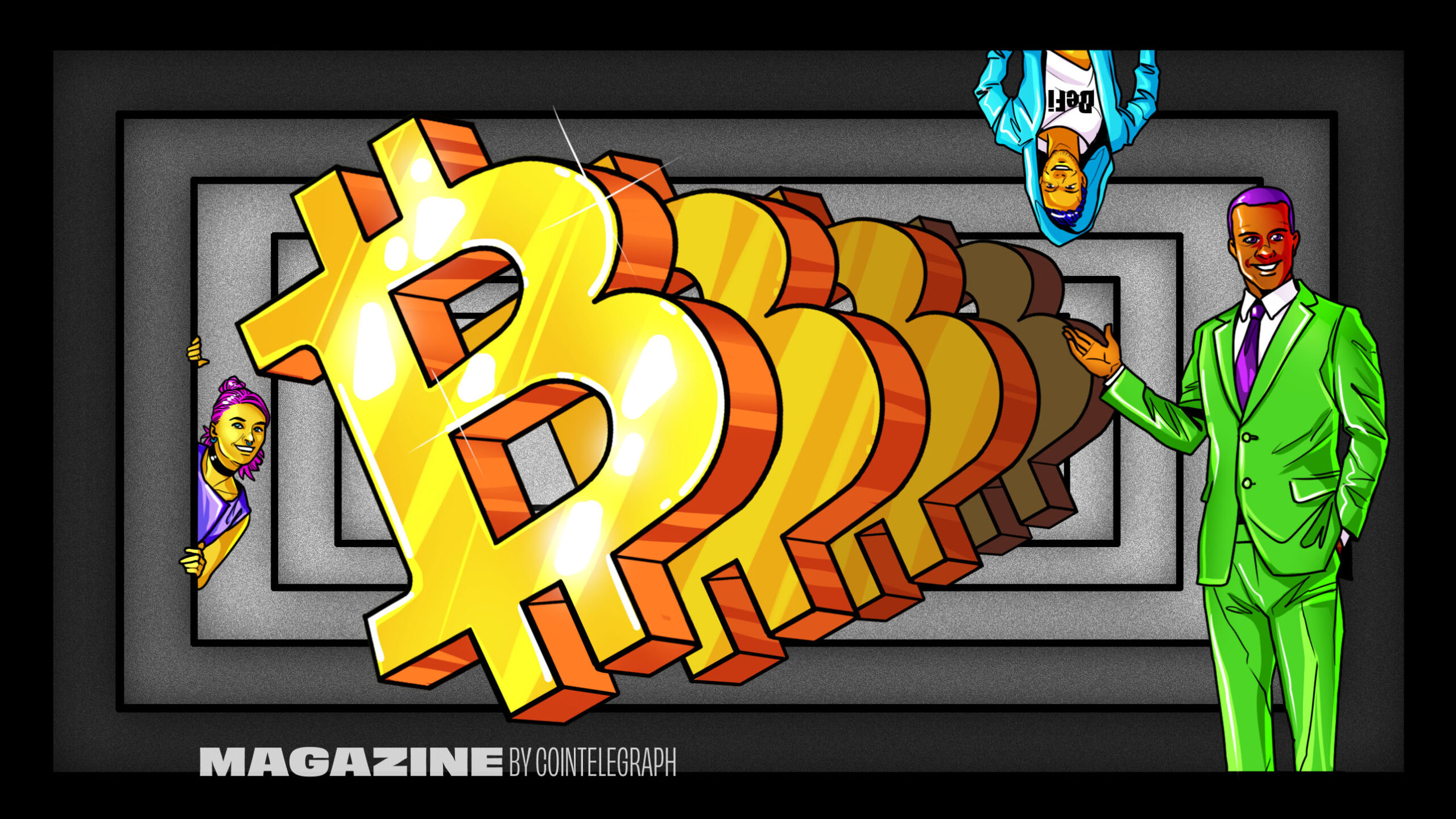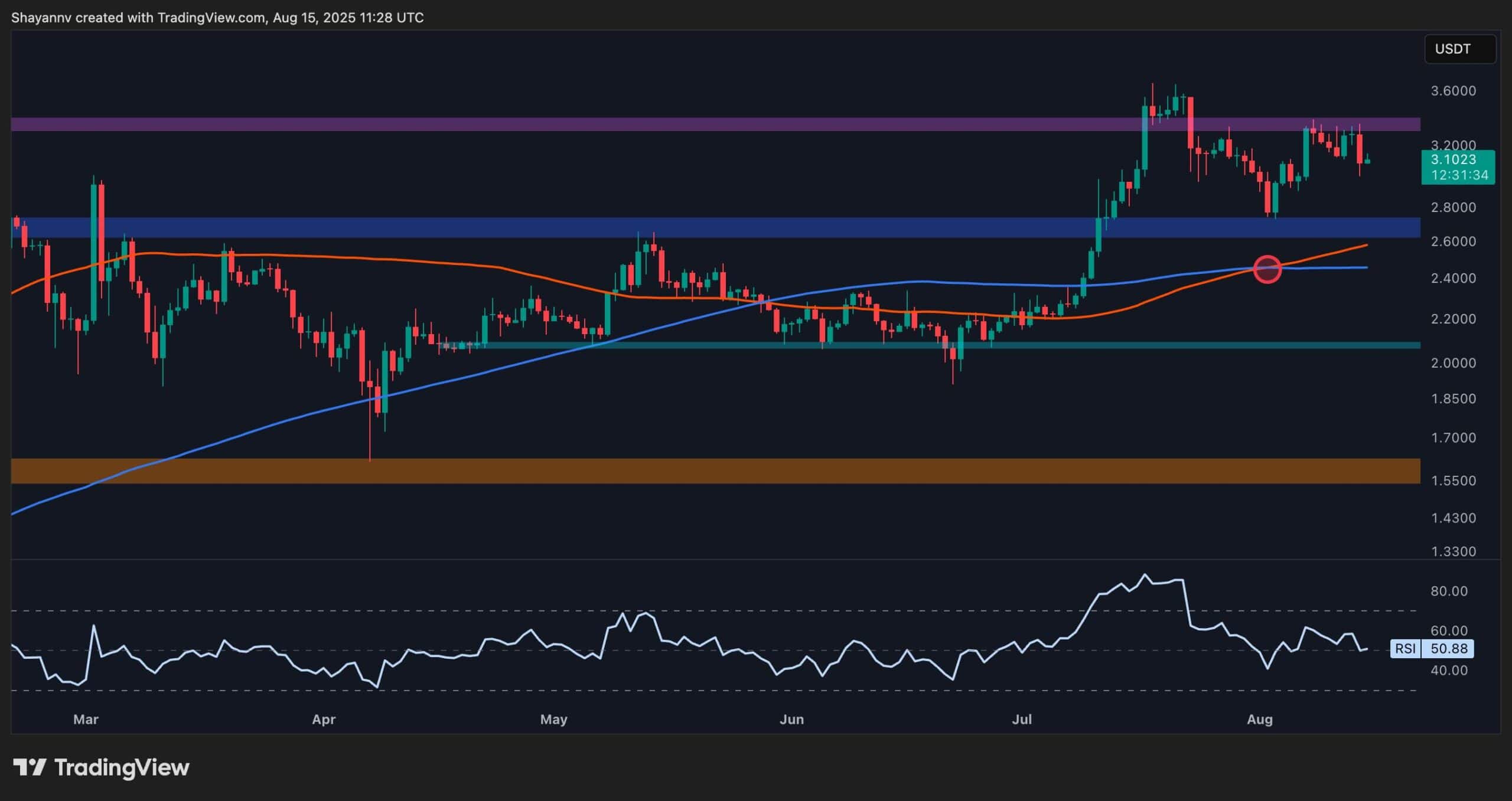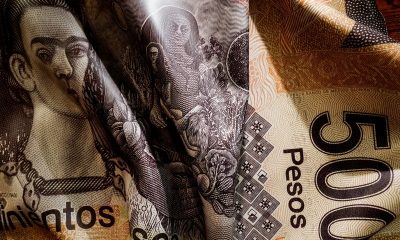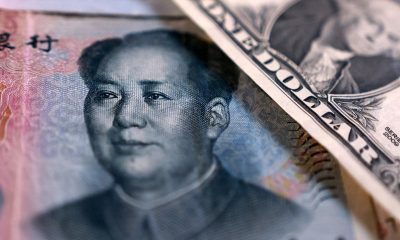Cryptocurrency
Recursive inscriptions: Bitcoin ‘supercomputer’ and BTC DeFi coming soon

Earlier this year, Ordinals — a unique inscription on the smallest unit of a Bitcoin, called a Satoshi — emerged as a controversial new development. Dismissed by some as spam and embraced by others as a way to bring BRC-20 tokens and NFTs to Bitcoin, the technology stimulated a flurry of developments.
Now there is excitement around “recursive inscriptions,” which is a very confusing yet potentially much more powerful development. Recursive Inscriptions essentially promise to allow more complex functionality to be built on Bitcoin’s blockchain, akin to smart contracts on Ethereum.
Some believe recursive inscriptions could see Ordinals develop from NFTs and “digital artifacts” to underpin a full-blown DeFi ecosystem on Bitcoin very soon. Others are confident it will enable Bitcoin to take on decentralized storage provider IFPS. One person Magazine spoke to believes it will eventually lead to an interconnected supercomputer being built on-chain.
Danny Yang, a Stanford PhD, creator of OCM Dimensions and Bitcoiner since 2013, says recursive inscriptions unlock the next evolution of Bitcoin:
“People won’t believe it when it’s presented to them now. It’s not going to operate exactly like Uniswap, but other high-value digital assets will emerge on Bitcoin. That’s what Ordinals and recursive inscriptions will evolve into. They will become a new form of programmable assets and code.”
These tech developments — while at a very early and speculative stage — are making Bitcoin interesting again. A Bitcoin maxi friend complained to me that I never write about Bitcoin. In truth, there’s been very little new to write about until recently.
“That’s pretty true,” Yang agrees.
Recursive support switched on in June
Yang has worked on recursive inscriptions since February in the form of Bitcoin generative NFT collections OCM Dimensions and OCM Genesis. He inscribed both of those innovative collections on Bitcoin in February (along with compression and 3D programming libraries) before anyone understood the significance of what he had done.
Yet OCM Dimensions was only publicly launched on June 15, the day that recursive inscription support was turned on for Ordinals.com. Yang explains to Magazine:
“You have to show something before people start listening, and finally, after months of beating the drums about the significance of recursive inscriptions on Bitcoin, people are starting to get it after we showed what was possible with OCM Dimensions — the first 3D, high resolution, animated and interactive work on Bitcoin.”
For now, the smart contract-enabled Ethereum blockchain is the home of more developer activity than anywhere else, and it dominates the DeFi sector. Until this year, the idea of building a genuine smart contract — the self-executing code used as building blocks for programmable money ecosystems — was not possible on Bitcoin.
But some now say Ordinals and recursive inscriptions could see a DeFi ecosystem emerge on Bitcoin fairly soon. It’s not going to be easy, though.
What are Ordinals and recursive inscriptions?
Ordinals allow you to uniquely identify a satoshi or a sat. A satoshi is 100 millionth of a Bitcoin. Identifying a fractionalized part of a Bitcoin means creating NFTs on Bitcoin or creating a provenance certificate on-chain is now possible. The idea of NFTs on Bitcoin, the most decentralized OG chain, is tantalizing for some.

In January 2023, developer Casey Rodarmor released the Ordinals protocol, creating Bitcoin NFTs on the Bitcoin blockchain. Rodarmor found an unintended loophole in the taproot scripts that command lines of Bitcoin code.
The Ordinals’ protocol creator argues that such NFTs are now “complete,” as the token and related images are stored on the Bitcoin blockchain rather than side chains or using off-chain storage systems like most Ethereum NFTs. Digital artifacts on Bitcoin are truly immutable.
“Now you can own the actual art, not just a contract that points at a piece of art stored on centralized databases,” says Carlo Fox, an “Ordinals OG” since February who created the Nakamoto Whales series. NFTs, as we know them on Ethereum and on other chains, are more like digital ownership certificates than actual on-chain art, and Ordinals change that.
“I got super excited for Ordinals for a few reasons: for one, we now can create and own on-chain art that is truly immutable. When you understand the ramifications of this, it’s huge. Half the time, NFTs as we know them are stored on AWS, centralized, and controlled by creators who can turn your art into pictures of turds at any time.”
Ordinals allow you to store any type of data on the most decentralized blockchain, and no one can modify it. “Ordinal artifacts may be most likely of any on-chain data to exist 2,000 years from now. That’s meaningful, and I think it is particularly relevant when in the context of important works of art, literature and science. I believe that Ordinals will become the premiere destination for the most coveted and important on-chain art. It’s akin to carving a statue out of gold,” says Fox.
So the business case for high-value NFTs minted on Bitcoin makes sense. Using the new tech to create cool 3D art for OCM Dimensions helped Yang’s company Metagood sell the idea of launching tokens on Bitcoin Ordinals to Asprey Studios and the Italian car company Bugatti recently.
But OG Ordinals could only hold 4MB of data, and that is one reason why recursive inscriptions have emerged.

Recursive inscriptions = Bitcoin cloud computing
At its most basic recursive inscriptions let you record stuff associated with a particular Bitcoin and enable smart contract-type functionality — Yang says they could have been called programmable inscriptions. By interlinking data through a series of calls (a contract for a sell order, for example), it’s possible to extract that data to run more complex processes anchored on Bitcoin blocks.
This enables recursive inscriptions to function like a distributed data repository, like putting AWS cloud on Bitcoin.
Composability — getting disparate projects and protocols to work together seamlessly — is an important part of crypto and one of the main reasons behind the exponential growth of the Ethereum DApp ecosystem.
Recursive inscriptions mean that even the most complex data sets, like video files and audio files, could now technically be hosted on Bitcoin. With a one-time cost to inscribe, data could be hosted forever on the most immutable and decentralized network in the world.

Inscriptions are like data legos, enabling data to be taken from somewhere else and built upon. In computer science, that’s where the phrase recursive comes from, as recursive inscriptions are a mechanism that extracts data from existing inscriptions and utilizes that data within new inscriptions.
Recursion is a fully on-chain process that uses scripts to combine various other on-chain data sources. These can include image layers, audio, code or other data sources. Individual scripts of code merge these layers together through recursion.
Recursive inscriptions use data inscribed elsewhere on new inscriptions, cutting down on storage requirements.
Fox uses the example of PFP art. Instead of uploading thousands of unique images (which can be prohibitively expensive), you can upload 200 and use scripts to combine them via the fully on-chain recursion process. The possibilities this offers are only just being explored.
This is powerful because recursive inscriptions enable new types of applications that were not possible before it. Applications like on-chain AI couldn’t be done on the base layer of Ethereum, but NewBitcoinCity builder Punk 3700 believes they could now be done on Bitcoin. He’s been playing around with “Perceptrons,” an early on-chain AI experiment on Bitcoin.
He explains that “it wasn’t possible to store the AI neural net models on-chain together with the artworks. So we split the AI models into different inscriptions and compose them at runtime.”
Inscriptions an important development for human freedom?
One of the most fascinating elements of recursive inscriptions is that once the data is on the blockchain once, you can simply refer to it again and again, vastly cutting down storage costs and block space utilization.
“Inscriptions are now reusable,” explains Punk 3700, “You can inscribe a very large code library like p5.js once, and other developers can reference that p5.js library at run time without inscribing it again.”
“This is super exciting because we start seeing a community-driven public infrastructure being built out.” This means more complex inscriptions are being created at a fraction of the cost.
“Essentially, any type of data can be an inscription. The most rudimentary use case combines multiple data sources together, and every piece of it can live on-chain. On-chain data might be able to communicate with each other, and data could be realized over time.”
Fox explains further: “The best way to think of it is anything you can do locally on a computer and have all little pieces live together in different files and work together.”
He gives examples like “open-source libraries, all on-chain,” meaning important research papers on Bitcoin, with citations on recursions on-chain, meaning major discoveries can be published on Bitcoin blocks for time immemorial. Javascript packages can be inscribed on Bitcoin. Essentially, a tiny internet that’s developed to live on Bitcoin can’t be taken down, building and building until one day it has created “an interconnected supercomputer living on Bitcoin.”
The public hasn’t grasped the significance of these developments, says Fox.
Let’s start with DeFi and AWS first
Long before the supercomputer cranks up, we’re likely to see Bitcoin DeFi and the chain emerge as a data storage competitor.
Toby Lewis co-founded OrdinalsBot, which automates inscriptions to help expedite development on Ordinals. He thinks that, for now, competing with the Web3 data storage provider IPFS is the best use case for recursive inscriptions. In the short term, both high-end and low-end NFTs can now be more affordably held on-chain.
“The end point of storing data onto Bitcoin will get people excited. That’s because Bitcoin has better name recognition than IPFS […] Bitcoin becomes the ultimate store of truth.”
Decentralized data storage on Bitcoin could disrupt NFT culture by allowing images, text files and audio files to be stored directly with tokens.

Lewis also thinks DeFi on Bitcoin is just becoming a realistic prospect now and that Bitcoin-native DeFi products are inevitable, even if they will be rudimentary for a while.
There is likely a large segment of users who will want to build and do something on Bitcoin, especially if the end state is a multichain ecosystem, posits Lewis. That is, use Bitcoin’s blockchain as the layer-1 base, and use Ordinals and recursive inscriptions to connect to other applications.
DEXs and automated market makers are starting to emerge. Lewis notes that Bitcoin can link up to other layer-2 applications as another way for smart contracts to emerge on Bitcoin.
This is the kind of DeFi that Punk 3700 has been building on Bitcoin. He launched a new protocol called Trustless Computer that enables writing smart contracts and building DApps on Bitcoin.
“If Ethereum and Bitcoin have a baby, that’s Trustless Computer.”
One of the first DeFi protocols it deployed was a Uniswap fork.
“Now that you could write smart contracts on Bitcoin, it turned out that building an AMM DEX was very simple. It took us just a couple of days.” A month after deploying Uniswap on Bitcoin, Punk 3700 connected it to Ethereum layer-2 network Optimism and says it can trade with two-second latency and low transaction fees.
“We now have a scalable infrastructure for DeFi to thrive on Bitcoin.”
Read also
Bitcoin maximalists aren’t going to like the use of Ethereum protocols in conjunction with Bitcoin, but Punk 3700 says it’s the future.
“This is the power of having a general-purpose programming language (Solidity) and a general-purpose virtual machine on Bitcoin. Developers can build any kinds of applications they want for Bitcoin.”
“Bitcoin is now no longer just a currency. It is becoming a DApp store.”
New generation of Bitcoin maxis?
At present, these use cases for recursive inscriptions and smart contracts on Bitcoin are highly speculative, and many Bitcoiners would no doubt argue abstracting it away on layer 2s means it’s no longer really Bitcoin at all.
But Leonidas, the founder of Ordinals marketplace Ord.io, is very excited about the new Web3 experiments on the Bitcoin layer 1 as well. He believes that “the release of the Ordinals protocol earlier this year ended a long period of stagnation” for the chain. He’s seeing a whole new wave of developers flood into the Bitcoin ecosystem, who are “eager to build everything from NFT marketplaces to DeFi protocols.”
“I think people will be pleasantly surprised with how much you can actually do on Bitcoin layer 1,” he says.
“The issue was never that Bitcoin as a technology wasn’t capable of handling Web3 use cases; it’s that a culture of toxic maximalism had driven the most talented developers to other ecosystems where they would be celebrated for their innovations rather than harassed.”
Leonidas firmly believes that through Ordinals, Bitcoin has “entered a new era where developers rather than idealists will dictate its future,” and he is optimistic that Bitcoin’s brightest days lay ahead.
Subscribe
The most engaging reads in blockchain. Delivered once a
week.

Cryptocurrency
Ethereum Foundation, Whales, and Hackers: What’s Driving the ETH Sell-Off?

TL;DR
- Whales, hackers, and the Ethereum Foundation wallets moved over $500M in ETH through large sales and withdrawals.
- Ethereum transfers rose to 4.6M ETH, nearing the monthly high of 5.2M recorded in July.
- Staking inflows hit 247,900 ETH, the highest in a month, locking more supply from trading.
Large Withdrawals and Whale Activity
Ethereum (ETH) has seen heavy movement from major wallets over the past few days. On-chain data from Lookonchain shows a newly created wallet pulled 17,591 ETH, worth $81.62 million, from Kraken in just two hours.
Over three days, two new wallets withdrew a combined 71,025 ETH, valued at $330 million, from the exchange.
One of these wallets, address 0x2A92, has withdrawn 53,434 ETH, worth $242.34 million, in two days. This includes a recent purchase of 30,069 ETH, valued at $138.46 million, during a market drop.
Major ETH Holders Offload Millions Amid Price Rally
In contrast, several separate entities have been disposing of some ETH holdings. A wallet tied to a hacker address 0x17E0 sold 4,958 ETH for $22.13 million at $4,463, securing a profit of $9.75 million. Earlier this year, the same address sold 12,282 ETH at $1,932 and later bought back part of the amount at higher prices.
A different whale sold 20,600 ETH for $96.55 million over the past two days, generating a profit of more than $26 million after holding the position for nine months.
Meanwhile, an Ethereum Foundation-linked wallet, 0xF39d, sold 6,194 ETH worth $28.36 million in the last three days at an average price of $4,578.
Recent sales from the same wallet included an additional 1,100 ETH and 1,695 ETH for over $12.7 million combined.
The #EthereumFoundation-linked wallet(0xF39d) sold another 1,300 $ETH($5.87M) at $4,518 ~11 hours ago.
Over the past 3 days, this wallet has sold a total of 6,194 $ETH($28.36M) at an average price of $4,578.https://t.co/4hfCWymHVG pic.twitter.com/ErUyEY8SJy
— Lookonchain (@lookonchain) August 15, 2025
Network Activity on the Rise
CryptoQuant data shows Ethereum’s total tokens transferred have been climbing since August 9. After ranging between 1 million and 3 million ETH through late July and early August, transfers have risen to 4.6 million ETH, approaching the monthly high of 5.2 million recorded in mid-July. This increase has occurred alongside a price rally from about $3,400 to $4,600.
Interestingly, staking inflows generally stayed between 20,000 and 80,000 ETH per day over the past month. On August 14, inflows jumped to 247,900 ETH, the highest in the period.
At the time, ETH was trading near $4,600. Large staking deposits reduce the amount of ETH available for immediate trading, as staked coins are locked for a set period.
In the meantime, ETH trades at $4,647 with a 24-hour volume of $68.25 billion, down 2% on the day but up 19% over the week.
Binance Free $600 (CryptoPotato Exclusive): Use this link to register a new account and receive $600 exclusive welcome offer on Binance (full details).
LIMITED OFFER for CryptoPotato readers at Bybit: Use this link to register and open a $500 FREE position on any coin!
Cryptocurrency
Massive DOGE Whale Activity Hints at $1 Breakout

TL;DR
- Whales bought two billion DOGE this week, lifting their combined holdings to 27.6 billion coins.
- A single 900M DOGE transfer worth $208M to Binance drew attention to large exchange movements.
- DOGE broke key resistance, with momentum building for a possible push toward the $1 price mark.
Price and Market Moves
Dogecoin (DOGE) traded at $0.23 at press time, slipping 4% over the past day but still showing a 2% gain for the week. Daily turnover came in at about $6.18 billion.
Meanwhile, the broader crypto market saw over $1 billion in liquidations. Hotter-than-expected US Producer Price Index data pushed traders to scale back expectations of a near-term Federal Reserve rate cut. DOGE had roughly 290,500 coins liquidated during the sell-off.
On the two-week chart, analyst Trader Tardigrade notes that DOGE has cleared a downward-sloping resistance line after completing what appears to be a “wave V” in an Elliott Wave sequence. Similar setups in the past, where prolonged declines stayed within falling channels before breaking higher, have been followed by sharp rallies.
$Doge/2-week#Dogecoin is gaining strong momentum to surge above $1 pic.twitter.com/TuSEKr19nv
— Trader Tardigrade (@TATrader_Alan) August 15, 2025
Momentum gauges are also turning up. The Stochastic RSI, which had dropped into oversold territory, is now heading higher. Previous reversals from this zone have coincided with sustained upward moves. The current formation points to a possible run that could carry DOGE past the $1 mark.
Heavy Whale Buying and Large Transfers
As reported by CryptoPotato, blockchain data shows large investors have added two billion DOGE in the past week, spending just under $500 million. That brings their holdings to about 27.6 billion coins, or 18% of the supply. The buying streak has prompted speculation within the community.
Recently, Whale Alert flagged a 900 million DOGE transfer worth about $208 million into Binance. The tracking indicates that it originated from a wallet connected to the exchange, likely as an internal activity. The address involved holds 2.88 billion DOGE, one of the largest balances on the network.
Ali Martinez also reports that transactions above $1 million reached a one-month high, with activity building since early August and peaking as DOGE traded at $0.25.
Whales are back! Dogecoin $DOGE activity at a 1-month high. pic.twitter.com/C83Pv68mCt
— Ali (@ali_charts) August 14, 2025
Sentiment Building
Analyst Gordon described the current setup as “a nice bit of consolidation” before a potential breakout, adding,
“This will be one of the first coins normies FLOCK to & the pump will be MASSIVE.”
With whale accumulation rising, high-value transfers increasing, and a bullish technical pattern in play, DOGE is positioned for a potential push toward $1 if momentum holds.
Binance Free $600 (CryptoPotato Exclusive): Use this link to register a new account and receive $600 exclusive welcome offer on Binance (full details).
LIMITED OFFER for CryptoPotato readers at Bybit: Use this link to register and open a $500 FREE position on any coin!
Cryptocurrency
Ripple Price Analysis: XRP at Risk as Key Support Levels Could Trigger Sharp Drop

XRP has recently entered a consolidation phase after a strong rally earlier this summer, with the price action now hovering around key resistance levels on both its USDT and BTC pairs. Yet, while momentum has slowed, the charts still indicate a generally bullish structure, with multiple key support levels remaining firmly in place.
Technical Analysis
By ShayanMarkets
The USDT Pair
On the XRP/USDT daily chart, the price is currently trading near the $3.10 mark, facing a strong resistance zone around $3.40. This follows a breakout above the $2.70 range in July, which has now flipped into a support area.
Both the 100-day and 200-day moving averages are also trending upward and recently formed a bullish crossover around $2.45, reinforcing the medium-term bullish sentiment. If the $3.40 resistance breaks, a push toward the critical $4.00 range becomes likely.
However, the RSI hovering near the neutral 50 level suggests a lack of strong momentum for now, meaning a short-term pullback into the $2.80 support zone is still possible.
This zone will be key for maintaining the bullish structure. Losing it could open the door for a deeper correction toward the 200-day moving average located around the $2.40 mark. Yet, as long as the price stays above the moving averages, the broader trend remains bullish.
The BTC Pair
Looking at the XRP/BTC chart, the pair has recently pulled back after hitting the 3,000 SAT resistance, with the price currently around 2,600 SAT.
This follows a clean breakout above the long-term descending channel and a successful retest of its upper boundary, which coincided with the 200-day moving average and the 2,400 SAT support zone. This confluence remains a key bullish technical factor, as holding above it could attract renewed buying pressure.
That said, RSI levels around 48 show that momentum has cooled after the sharp July rally, meaning XRP may continue ranging between 2,400 SAT and 3,000 SAT in the near term. A decisive close above 3,000 SAT would likely open the path to the 3,400 SAT zone, while losing 2,400 SAT could shift the bias back toward 2,000 SAT support. For now, the structure still favors the bulls as long as higher lows remain intact.
Binance Free $600 (CryptoPotato Exclusive): Use this link to register a new account and receive $600 exclusive welcome offer on Binance (full details).
LIMITED OFFER for CryptoPotato readers at Bybit: Use this link to register and open a $500 FREE position on any coin!
Disclaimer: Information found on CryptoPotato is those of writers quoted. It does not represent the opinions of CryptoPotato on whether to buy, sell, or hold any investments. You are advised to conduct your own research before making any investment decisions. Use provided information at your own risk. See Disclaimer for more information.
Cryptocurrency charts by TradingView.

 Forex3 years ago
Forex3 years agoForex Today: the dollar is gaining strength amid gloomy sentiment at the start of the Fed’s week

 Forex3 years ago
Forex3 years agoUnbiased review of Pocket Option broker

 Forex3 years ago
Forex3 years agoDollar to pound sterling exchange rate today: Pound plummeted to its lowest since 1985

 Forex3 years ago
Forex3 years agoHow is the Australian dollar doing today?

 Cryptocurrency3 years ago
Cryptocurrency3 years agoWhat happened in the crypto market – current events today

 World3 years ago
World3 years agoWhy are modern video games an art form?

 Commodities3 years ago
Commodities3 years agoCopper continues to fall in price on expectations of lower demand in China

 Economy3 years ago
Economy3 years agoCrude oil tankers double in price due to EU anti-Russian sanctions


























